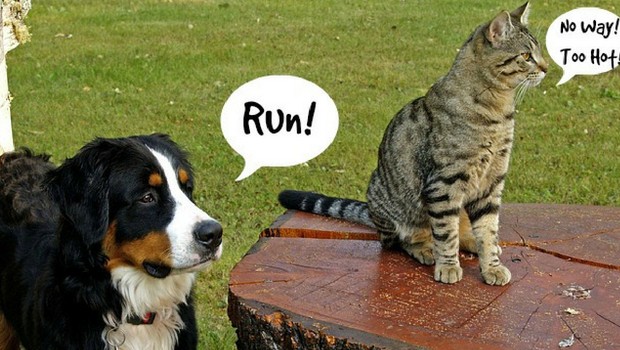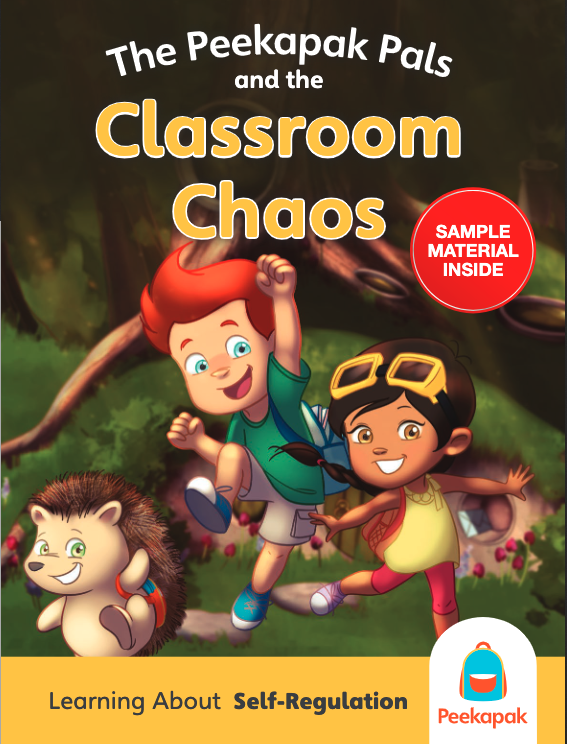BY: admin
Uncategorized
Comments: No Comments
What have Freud and Lacan to offer Speech Pathology?
What have Freud and Lacan to offer Speech Pathology?
By Michael Audas – Speech Pathologist
It is convenient, in terms of justifying therapeutic interventions, to posit a model of ‘healthy speech’ from which pathologies of speech, defined by phenotypical clusters of symptoms, can be distinguished.
To the contrary, I would argue that speech is itself fundamentally pathological, since it is a symptom emerging from our helplessness as infants—an affliction that is very nearly unique to humans. It is during the prolonged period wherein we are unable to fend for ourselves that first vocalisations, and then speech, emerge as a means of inducing others to see to our needs and wants.
While it is true that other animals make communicative noise (which in humans we call vocalisation), symbolisation is, as far as anyone has determined, the sole province of humanity. Symbols alone are sufficient to address the increasing complexity of the things we want—and the impossible grandiosity of the extent to which we want them.
Invoking and combining these symbols in order to construct a meaning—a phantasy—around our wretched circumstances is a habit inculcated in infancy and childhood, but it remains a lifelong vice. The child, vaguely comprehending his or her own powerlessness in a world of brimming with threats of all kinds, constructs a narrative about a mighty king and queen who protect their young princess or prince from the dragons, warlocks, and other assorted malevolent entities baying at the borders of the realm.
After the prince or princess makes their Oedipal ascent to the throne, and thereby becomes an adult, they inevitably not only discover that the crown weighs heavy, but also that regent is scarcely less helpless than infant in the grand scheme of things—a scheme which from high atop their castle seems to unfurl before them as a terrifying, limitless expanse.
Worse still, the princess or prince, upon assuming the title of king or queen, now realises that the phantasy of their youth is untenable. Where once they imagined their parents to be invincible and infallible scions, they now apprehend the truth: the former king and queen too were nought more than scared children. It is the moment of this realisation, and not the ascension to the throne itself, that truly constitutes a regicide patterned after Oedipus and Laius. Indeed, we may posit a double regicide, given that the realisation that that signifier of ‘king’ or ‘queen’ no more befits the current ruler than the former. According to Nietzsche’s formulation, this might run something like ‘der König ist todt! der König bleibt todt! Und wir haben ihn getödtet!’ [1]
But it is in the nature of language that that which enters into the chain of signification may never escape its bonds. That is to say, something which is symbolised may never be divested of symbols (and I am here using ‘signifiers’/’signification’ and ‘symbol’/’symbolisation’ almost interchangeably) altogether, even a given symbol is substituted by the negation of that symbol: e.g., ‘former queen/king.’ No matter how far we follow the links of the chain, we only ever find more links (symbols).
And so, the twilight of one phantasy becomes the dawn of the another. The symbols of the previous phantasy will be rearranged, not only because this is, as we have just discovered, in the nature of language, but also because the promise language offers of construction of a new phantasy is far too tempting for any of us to resist.
The new phantasy will resemble the old one in many ways; most noticeably in that it will still locate a source of benevolent, protective power outside of oneself. But precisely where this is located may well be subjected to a displacement of level—from the individual (e.g., the parent/monarch) to the institutional (e.g., to the nation-state). Entities which seem to transcend the individual, temporal, and finite hold out the possibility of a more durable ground for a new phantasy which we take to secure our own place in the cosmos. Nevertheless, the traces of the former phantasy are still evident, not only in the overarching structure (or meta-narrative) of the phantasy, and the purposes which it serves, but also in the way in the impersonal entities conscripted into phantasy take on very personal or anthropomorphic qualities. It is hard for us to trust, for instance, that the state will really operate to protect us unless it cares for us in some way that resembles the love that drove the royal mother and father to keep us from harm.
We have discussed this childhood phantasy at some length now, but I hope that I have not left the reader with the impression that this is the only phantasy we have to contend with. On the contrary, this is but one phantasy—one that to a certain degree, and in its broad outlines, may be taken to be universal—but language at the very least permits, and may well obligate, a profusion of phantasies, both personal and collective.
The work of Sigmund Freud and Jacques Lacan—which, despite not being explicitly referenced up until this point, has undergirded everything expounded thus far—shatters any illusion we might have about a separation between mental life and language. The contents of the psyche are, quite necessarily if one thinks about it, not made up of things that exist in reality, but symbolic representations of things in reality which have already been filtered by perception (a process which itself is subject to psycholinguistic biases). And, like any attempt at representation—such as a map or a painting—our symbolic representations are unavoidably incomplete and inaccurate as regards that which they seek to capture.
The residue of ‘stuff’ we fail to symbolise in language leaves a trace, a marker of something lacking, in our attempts to make meaning. This is especially true of things which we have no way of directly perceiving (if anything like ‘direct’ perception is possible in the first place), such as the thoughts and feelings of others. We are motivated to attempt to discern how the people around us are thinking and feeling, but we must rely on our apprehension of the words those people use to attempt to convey said thoughts and feelings. But whatever words they choose will be ill-suited to the task, because they will be drawn from a lexicon that was collectively constructed to refer to shared experiences and referents (e.g., objects in our environment that we can all see), when what is being attempted to be shared is something internal, private, and emphatically not part of shared experience.
The impossibility of ever really knowing what is going on, at a subjective level, inside the psyche of another person is problematic for us as meaning-seeking/making, linguistic creatures: we fail to recognise the existential dread of our parents/rulers. Is it any surprise, then, that there was a movement towards a kind of solipsism in Psychology which went under the mantle of ‘behaviourism’? As it turns out, an antidote to solipsism may be precisely what Freud and Lacan have offer both Psychology and Speech Pathology, as the latter likewise often elides the bidirectional implications that the mind and language/speech have for one another—positing communication and language, instead of behaviour, in the absence of minds.
In terms of how Speech Pathologists, approach their field, however, the abandonment of the illusion of speech that is non-pathological or non-symptomatic is a genuine gift that could be obtained through engagement with these thinkers. This is a gift not only because it happens to be true, but because it better allows us to understand that accessing speech and language is about more than re-/habilitating a functional capacity for our clients to receive and transmit information; rather, it is the principal means we have of coping with the trauma of our human existence. At the same time, it should temper our enthusiasm for language as an unambiguous good, given that language also permits of the phantasies which, when mistaken for the real, permit most of us to spend much of our time dreaming, even while awake.
- [1:] The King is dead! The King remains dead! And we have killed him.
BY: admin
Uncategorized
Comments: No Comments
Joint Attention Skills and Children with Autism
Joint Attention Skills and Children with Autism
By Aamina Shakoor – Speech Pathologist
What is Joint Attention?
Joint attention is the ability to share a common focus on something with another person, this may include people, a concept, objects or an event. It involves being able to gain, maintain and also shift attention. Joint attention is used as a referencing tool that involves visually focusing on the same thing and/or gesture can also be utilised. Overall, sharing focus helps individuals communicate effectively, but also helps develop important social skills which include understanding other people’s point of view and forming a bond. Joint attention skills can also be an indicator of a child’s language development.
Joint attention first begins during infancy and it is established between a child and their parent or guardian. Early skills encompass reaching out to be picked up, pointing toward a toy or focusing on looking at the same page in a book. Later developing skills involve participating and focusing on a game, playing make-believe or requesting for certain items.
Children with Autism may experience some difficulties with such activities as they may tend to lack the social skills that are necessary to initiate and maintain focus with another person. This can tend to lead to dealing with difficulties in allowing for their wants and needs to be understood and met.
Skills Needed for Joint Attention:
A variety of skills are important for joint attention (Woods & Wetherby, 2008, p. 181). Not only do these skills help an individual to get his/her wants and needs met, but they are necessary for appropriate interactions and developing meaningful relationships.
These skills include:
- Orienting and attending to a social partner
- Shifting gaze between people and objects
- Sharing emotional states with another person
- Following the gaze and point of another person
- Being able to draw another person’s attention to objects or events for the purpose of sharing experiences
How to Help Improve Joint Attention:
Ways to help improve a child with their joint attention skills can include providing a good language model. Helping children with autism in particular, it is crucial to use gestures, such as pointing along with eye contact or gaze to show the child where to direct their attention. Using hand-over-hand approach which involves the parent or guardian holding the child’s hand and helping them to point to an object to help practice gestures. Pointing towards object that the child is familiar with and is interest in can also be a great place to start. Additionally, other ways to help improve joint attention is to also follow the child’s lead. When the child is showing interest in a particular object or toy, you can follow their lead and also show interest in the chosen object or toy. Furthermore, commenting on their interests can also enhance joint attention.
Joint attention skills can be incorporated into daily routines. Many children with autism tend to have more success with daily functioning when they have consistent routines. Keeping in mind that practicing joint attention skills in the child’s natural environment can help them achieve and develop social and communication skills at home, school and in the community.
Resources:
Woods, J. J., & Wetherby, A. M. (2008). Early identification of and intervention for infants and toddlers who are at risk for autism spectrum disorder. Language, Speech, and Hearing Services in Schools, vol. 34, p. 180-193.
BY: admin
Uncategorized
Comments: No Comments
Articulation Errors Types
Articulation Errors Types
By Aamina (Speech Pathologist)
Speech sound production is a process of complexity which involves precise planning, movement and coordination of the lips, teeth, tongue, palate, cheeks, jaw and voice box – these are our articulators. Producing clear speech involves correct articulation, clear speech can also be referred to as intelligibility.
Errors in speech sound production are also known as articulation errors. Articulation errors are common in children when they are first learning to speak. An example of this is a toddler saying “wed” for “red”. Majority of children will eventually outgrow these speech errors, and this is a normal part of learning to produce new sounds.
If a child is demonstrating articulation errors that are not typically developing errors, then it is likely for them to need to see a Speech Pathologist. The Speech Pathologist is able to evaluate the error types the child is making and form an intervention or therapy plan. The Speech Pathologist will teach the child how to produce that sound correctly by:
- encouraging the child to move the articulators in the correct manner as well as
- explaining the type of sound (e.g., “whistly” sound, “long” sound or “short” sound)
- whether to turn their voice on or off.
A child can make the following articulation errors when producing speech sounds: Substitutions, Omissions, Distortions, and/or Additions. An easy way to remember these is to use the acronym SODA!
S – Substitutions
Definition: Replace one sound with another sound. Examples: “wed” for “red,” “thoap” for “soap,” “dut,” for “duck”
O – Omissions (also known as deletions) Definition: Omit a sound in a word.
Note: This error affects intelligibility the most, making speech more difficult for the listener(s) to understand.
Examples: “p ay the piano” for “play the piano”, “g een nake” for “green snake”
D – Distortions
Definition: Produce a sound in an unfamiliar manner.
Examples: “pencil” (nasalized—sounds more like an “m”) for “pencil,” “sun” (lisped—sounds “slushy”) for “sun”
A – Additions
Definition: Insert an extra sound within a word.
Examples: “buhlack horse” for “black horse,” “doguh,” for “dog”
BY: admin
Uncategorized
Comments: No Comments
Pragmatics
Pragmatics
by Michael (Speech Pathologist)
- A boy walks through the front door.
- Mother: Wipe your feet, please.
- He removes his muddy shoes and socks and carefully wipes his feet on the doormat.
- E.g: Dogs chase cats.
- Paraphrase: Domestic canines pursue domestic felines.
- E.g., Melissa: *What’s up with Terry [the cat]? He was running away like his tail was on fire. Did Rufus [the dog] have anything to do with it?”
- Matt: Dogs chase cats.
- Paraphrase: Yep, Rufus was chasing Terry and that’s why Terry was terrified.
BY: admin
Uncategorized
Comments: No Comments
Childhood defined by, and through, language
Childhood defined by, and through, language
by Michael (Speech Pathologist)
I recently read a paper by Michael Gerard Plastow* and was lead to ponder the following question: if what is taken to constitute a child depends on historical and cultural contingencies, can language development provide us with a more solid, less transient foundation? A century ago, the terms “infant” and “child” were synonymous; whereas today there is a relatively-distinct, if arbitrarily-placed, distinction separating the two. Going back further than this, we see that the child virtually disappears from the art of the Middle Ages: replaced by figures resembling adult men and women in all but stature.
Part of the confusion about which cluster of ‘ages and stages’ belongs under the headings, ‘infant,’ ‘child,’ ‘adolescent,’ and ‘adult’ is surely owed to the less-than-perfect correlation between said ages and stages. Not everyone comes into possession of the same attainments, by the same ages, as everyone else, and so we are left with a quandary as to which metric (ages or stages) we should use to judge whither child or non.
Moreover, as the preceding quote from Freud illustrates, we flatter or diminish ourselves (depending on how one looks at it) to imagine that we ever leave the child behind. Here, another quote, this time by William Wordsworth: “The child is the father of the man.” Hence the man, or woman, is both his or her own father or mother, and yet still the child, even unto manhood or womanhood.
What, then, might we speculate that words are worth in settling this debate—in providing a more solid foundation upon which some kind of boundary wall, bidirectionally permeable as it may be, might be constructed? Let us start with etymology. ‘Infant’ comes into English by way of the French enfant (as in, Les Enfants Terribles), which has only the connotation of ‘child,’ but this in turn descends from the Latin infans, designating “one without speech.” Aha! Now we have it, yes, a distinction as clear as night and day to bound and separate ‘infant’ from ‘child’ or ‘adult.’
I have my doubts, however. You see, while I would not be much of a speech pathologist if I made light of such a momentous milestone as speech, but, on the other hand, what of all all the people who never come into possession of speech, or which lose its facility? Most assuredly these people are not infans—literal Latin interpretations aside. Nor does it sit well with me that the short period of time preceding which most children do come into possession of speech is followed by a much larger stretch of time over which all sorts of mighty accomplishments (and not only in the domain of speech and language) are made on the way to the moving goalposts of adulthood.
In speech pathology, we often speak of “adult language,” and hold this out as a kind of endpoint towards which (we hope) “child language,” in the particular instantiations of individual children themselves, is moving. These two classifications encompass a range of abilities too numerous to delve into here, but suffice it to say that what is generally being posited is that there is a tipping point at which the complexity of a child’s language, and the ways that they use it, are in some kind of parity with the complexity and usage of adult language in the aggregate. There are two obvious problems with this, at least if we entertain any hopes the movement between these categories to in turn substantiate our categories of ‘child’ and ‘adult.’ First, it assumes that this is progressive movement in which gain after gain occurs, and nothing is lost; second, it runs into the problem of circular reasoning, since we form our conception of what constitutes adult language by evaluating how adults use language—which of course requires that we already have a definition for the very thing we are seeking to define!
I fear, then, that I can do no better than Oedipus in answering the Sphinx’s riddle, and only respond with “wo/man” to “which creature walks on four legs in the morning, two legs in the afternoon, and three legs in the evening?”
* Plastow, Michael G. The Ages of the Child https://www.ecritique.net/volumes/Volume_10/fwdecritiquevol102015pdfs/6_Ecritique%2010.%20MichaelPlastowTheagesofthechild.pdf
BY: admin
Uncategorized
Comments: No Comments
Why do children speak?
By Michael Audas, Speech Pathologist
Have you ever asked yourself, “why do children start speaking?” It’s not a question that arises very often, as most of us take for granted that speaking is an all-but-inevitable occurrence in the development of a child that ‘just happens.’ To an extent, this is true: children are primed to learn language, and primed to speak, and this is why they begin babbling right from the crib.
But on the other hand, speaking, unlike breathing or digestion, is an entirely voluntary act: we can quite easily stop speaking without suffering any physical harm. Speaking has to be something we want to do in order for us to do it, so why do would we—and children—want speak? Here are two reasons: first, speaking is fun, and second, because someone is listening. It is this latter reason that I would like to focus on here.
We all want people listen, and we all want to be heard. This is, as I have just said, a big part of why we desire to speak in the first place. Perhaps, though, we might be somewhat saddened by reflecting on how seldom this actually occurs in our own lives and, by extension, the lives of children.
What, then, gets in the way of listening? It is usually not that someone is intentionally, or even negligently, oblivious to what we are saying. Rather, we all have a tendency to listen in a way that actually revolves a lot more around ourselves than it does the other person. When someone tells us a story from their personal history, the first thing we search for is a story of our own to match it. If we are successful in finding this match, we further believe that we have related to, and understood, the experience they are attempting to convey.
When we fail to relate to the other person’s story, we often come to the conclusion that we have not understood them or, worse, that they have not made themselves understood. In an effort to avoid this unpleasant conclusion, we can be wildly overzealous in attempting to assimilate someone’s story to our own; as a result, we become deaf to many of the unique features of the other’s story, and that person’s other-ness itself. We haven’t really listened to what makes them them.
If someone is not hearing our stories, with all of their idiosyncrasies and eccentricities—which are precisely the parts of the story which speak to who we are—our desire to continue communicating them may diminish. So how can we counteract this natural, but not always-ideal tendency, in our interactions with little storytellers?
If I were to propose that we attempt to ‘just listen,’ this might capture the essence of what is needed, but in a manner so vague as to not be useful. Instead, let me propose some specifics:
- Set aside a time and a place—preferably a quiet space—for some uninterrupted sharing time. Reading a book or engaging in some other activity that both of you enjoy can be a good way to break the ice.
- Exercise ‘hovering attention.’ This means leaving preconceptions and agendas at the door, and letting the child’s words percolate in your mind without being preoccupied immediately arriving at a particular interpretation.
- Ask your child to elaborate or explain things you don’t understand, rather than your first recourse being to attempt to make sense of what they have said for them.
- If your child is describing something that happened to them, ask them how that experience was for them, rather than telling them how it was for them, or might have been for you had you experienced the same.
Listening in this way is not easy. It runs counter to our inbuilt tendencies and long-cultivated habits. Nevertheless, I urge you to try, and see who you find!
BY: admin
Uncategorized
Comments: No Comments
Learning about self regulation
Learning about self-regulation
by Michael, Speech Pathologist
When it comes to communicating, expressing how we feel can be one of the most intimidating challenges for us to grapple with. By the time we might feel the need to talk about our feelings, it is often because the intensity of those feelings has reached a critical point, and in that state we are quite vulnerable to what someone might say in response. It is no surprise, then, that children and adults alike tend to shrink from this challenge, and choose to remain silent instead.
Not sharing our emotions with others, however, can lead to some of our actions seeming quite mysterious to others. And while adults are usually quite good at inventing reasons to explain away their behaviours, children, especially very young children, find this much more difficult, and may simply forego offering any explanation at all. But whether one is inventing reasons or avoiding them altogether, neither strategy is likely to result in solving whatever problems led to those emotions in the first place.
This is exactly the situation that Leo and his classmates in the book, Classroom Chaos, find themselves in. It’s Leo’s first day at school, and he is feeling understandably nervous, but his father teaches him a special poem that helps him calm his troubling feelings:
—Sometimes I’ll feel happy,
—And sometimes I’ll feel sad.
—But sharing my feelings with others,
—Will always help me feel glad.
Reciting this poem to himself, Leo finds to talk about his nervousness with the significant people in his life, and they are able to help him work through those feelings. But more than this, Leo shares his poem with his classmates, and, throughout the day, they each start sharing their emotions and this leads to the resolution of many misunderstandings between them.
Classroom Chaos is a wonderful story about the power of speech and language to bridge the divide between our internal worlds, and the internal worlds of others. When we communicate with confidence, we give others the strength to do the same.
You can find a free copy of Classroom Chaos here.
BY: admin
Uncategorized
Comments: No Comments
All about stuttering
What is stuttering?
by Michael, Speech Pathologist.
We may all think we have at least a rough idea of what stuttering is, but arriving at a precise definition of stuttering that differentiates those who stutter from those who do not is a deceptively complex endeavor. Why should this be? Let us look at the definition offered by the World Health Organization in 1977:
Disorders in the rhythm of speech, in which the individual knows precisely what he wishes to say, but at the time is unable to say it because of an involuntary, repetitive prolongation or cessation of a sound.
There are two glaring problems in this definition. The first is that the definition relies on behaviours that are not exclusive to people who stutter. Whether or you are someone who stutters, I am sure that you can recall many occasions when you were temporarily unable to say what you wanted to say due to “involuntary, repetitive prolongation or cessation of a sound.” So this definition in no way distinguishes between those two do and do not stutter, it merely describes interruptions to fluent speech, which are a universal phenomena.
But this definition suffers from an even more fatal flaw. It fails to acknowledge two hidden, but extremely important, facets of stuttering: covert stuttering behaviours, and the psycho-emotional concomitants of stuttering. If we use the visual metaphor of an iceberg, the stuttering behaviours captured in the World Health Organization’s definition represent only the visible ‘tip,’ of the iceberg, while the two facets just mentioned represent the vast bulk submerged beneath the water.
Covert stuttering behaviours are, as the name implies, behaviours which are an attempt on the part of the person who stutters to conceal, avoid, and prevent ‘stuttering moments’—or times when the repetitions and prolongations already mentioned occur. Behaviours of this sort range from substituting words or phrases associated with stuttering moments, to the avoidance of speech altogether. Some people who stutter may be so practiced in the utilisation of these behaviours that they may not be recognised by those who associate with them as someone who stutters.
It should not be underestimated, however, the toll that covert stuttering behaviours may take on the one who regularly employs them. Avoidance of speech, in particular, may have devastating consequences in the realms of professional and personal life. Anxiety (particularly social anxiety), depression, and other impacts on mental and social wellbeing may all ensue when stuttering functions to negatively alter one’s self-image and/or ability to function in social life without excessive levels of discomfort.
It might even be said, that it is the impact that stuttering has on the life of someone who stutters, rather than the subset of behaviours that might be said to comprise stuttering, which is the true grounds for differentiating someone who stutters from someone who does not. At the very least, this should be the primary consideration when evaluating the need for treatment.
Treatment
There are a large number of treatments available for both children and adolescents or adults who stutter. For children, the treatments supported by the most robust research evidence are:
- The Lidcombe Program
- The Westmead Program (also known as syllable-timed speech)
For adults, the approach demonstrated to most effectively reduce stuttering behaviours is the Camperdown Program. This approach is what is known as a “speak more fluently” approach, while there are other treatments which emphasise a “stutter more fluently” approach, in that they place a greater level of importance on the ‘submerged’ aspects of stuttering that we have already touched on, rather than on only reducing the incidence of overt stuttering behaviours.
The reason that different programs exists for children and adult or adolescent populations is that effective treatment in the early years can often result in a complete remission of stuttering behaviours (though of course not the elimination of typical dysfluencies). Past a certain stage of maturation, however, stuttering behaviours—covert and overt—become well enough entrenched that management, rather than remission, is what might reasonably be expected as an outcome of current treatment modalities.
No matter the age of the person seeking treatment, or what treatment he or she ends up selecting, it is vital that to the success of these treatments that they enjoy the support of their loved ones: both on an emotional level, but also as active participants in the intervention itself.
BY: admin
Uncategorized
Comments: No Comments
What is Literacy
WHAT IS L I T E R A C Y
By: Pauline, Speech Pathologist
| What is literacy? | Simply put, literacy refers to the ability to read, write, and spell. |
| Why is it important? | The ability to interpret information and express oneself in text are critical skills in this Information Age. |
What should my child be able to do at his/her age?
- Understand that print carries a message
- Make attempts to read and write
- Identify familiar signs and labels
- Participate in rhyming games
- Pretend to read, either by remembering a story and by using the pictures to help them tell the story
- Name various letters of the alphabet and make some letter-sound matches
- Use upper- and lower-case letters interchangeably
- Know how to write a few letters and know the direction of writing on a page
How can I help my child at home?
- Most importantly, read with them! The benefits of shared reading cannot be stressed enough! While you are reading…
- pause while reading to talk about the story and pictures
- point to each word with your finger as you read
- Make books available for your child to read with you as well as explore on his/her own
- Make reading a fun, everyday activity and read with enthusiasm (beware of not making it a chore)
- Give your child many opportunities to see you reading because this will show your child how important reading is to everyday life (newspaper, labels, books)
Activities to support your child
Research has shown that the skills targeted in the following activities are foundational to the development of literacy skills.
Syllable Awareness (age 4-5) – identifying how many syllables are in words
| If you are in a hurry… | If you have more time… |
| While driving in the car or on the train, ask your child, “Can you clap and count the parts in rainbow?” This can be done for any word, as opportunities arise. Start with 2 syllable words like ‘apple’ and 3 syllable words like ‘banana’ | Ask your child to think of the longest word they know and demonstrate the length by clapping out the syllables, for example: caterpillar, elephant, alligator. |
Awareness of Sounds (age 5-6) – identifying beginning, middle and final sounds in words.
| If you are in a hurry… | If you have more time… |
| While stuck in traffic, sitting in the doctor’s office, or on the bus play I Spy.
For example, “I spy something beginning with the sound “k”, I spy something that ends with the sound ‘p’ and, I spy something that has ‘o’ in the middle. (remember to say the sound not the letter name). On a piece of paper, write the beginning sound and the end sound and let your child add in the middle sound e.g. ‘m—p’ for ‘M-o-p’ |
Set up a shop that only sells items that begin with a sound. For example: milk, mice, marbles, marshmallows, mugs, mops, maps etc.
Play what sound is last: ‘c-u-p’ |
Sound Blending (age 5-6) – able to blend sounds in a word (for example, after hearing c-a-t said with the sounds isolated, your child says “cat”).
| If you are in a hurry… | If you have more time… |
| Play a different version of I Spy by sounding out the name of the object you are looking at. Your child must blend the sounds together to determine the object. For example, “I spy something that is round. I spy a ‘c-u-p’. | Use a grab bag of toys, peek inside and tell your child, “I see a toy d-u-k- in here. Do you know what I see?” Use longer words if your child is doing well e.g. ‘t-a-b-le’ and ‘b-l-o-ck-s’ |
BY: admin
Uncategorized
Comments: No Comments
WAIT…WHAT?! with an EXPECTANT LOOK
WAIT…WHAT?! with an EXPECTANT LOOK
By Pauline, Speech Pathologist
Since we started telehealth sessions, I often hear many parents providing the answers in the background.
Working with children with speech and language delays require substantial patience. This patience is WAITING a bit longer than usual. Children benefit from waiting a little longer to allow them to process the information. Increased wait times with expectant looks is a strong way to help a child respond to questions on his or her own. After asking a question, don’t repeat right away, ask different questions, don’t answer for the child, tell the child what to say, comment such as “You know that!”. It only delays the process or frustrates the child. You are sending the message that he/she is taking way too much time to answer. It’s also interrupts their thinking process and hinders their ability to be independent.
As speech pathologists, we want to know what the child is capable of doing on his/her own, what level the child is performing at, and what support, cues or strategies works best for the child to come up with his/her own response.
How much time is enough time?
After asking your child a question, count 5-10 seconds silently in your head (1,2,3,4,5,6,7,8,9,10). Yes, it may feel like a long time.
Pair the wait time with a visual cue:
-Point to the screen
-Point to your forehead (i.e., you are thinking about it)
-Place your hand on your chin in a thinking pose
Here are some things you can do while you wait:
-Take a drink of water
-organize the desk area
-repeat the question to yourself at least one time
-take a few deep breaths
If after waiting for 5-10 seconds, you do not get a response, you can:
— Repeat the question
— Rephrase the question
— Make the question less complex
— Give your child a forced choice (e.g., “Do you think it is —- or —–.”)
— Provide a sound cue (e.g., It starts with a ‘P’ sound)
— Provide a sentence completion cue (e.g., “You eat with a fork; You cut with a ——“?)
Consider the two scenarios below:
Scenario #1
Speech Pathologist: Laura, have you ever gone to the zoo? (waits with an expectant look silently counting 1,2,3,4,5,6,7,8,9,10 and pointing to forehead).
Laura: We saw tigers.
Speech Pathologist: Wow, I love tigers! (more wait time with an expectant look focusing on Laura with hand on forehead).
Laura: We saw zebras and giraffes too.
-In the above scenario, Laura was provided with more time and expectant look along with a visual cue pointing to forehead to formulate and come up with her own response about her visit to the zoo. She was processing the information and going through her visit in her head and thought of the animals. Given Laura more time allowed her to continue the conversation.
Scenario #2
Speech Pathologist: Laura, have you ever gone to the zoo? ( waiting with an expectant look silently counting 1,2,).
Parent: Laura, remember we went to the zoo on your birthday? ( Answers for Laura).
Laura: Looks at parent.
Parent: We went with grandma and you really liked the tigers (Laura is silent).
Parent: Do you remember? We saw zebras and giraffes too. (still answering for Laura)
Laura: (Talking to her parent) Yes.
In the above scenario, Laura left the conversation with the Speech Pathologist and turned her attention to her parent.









